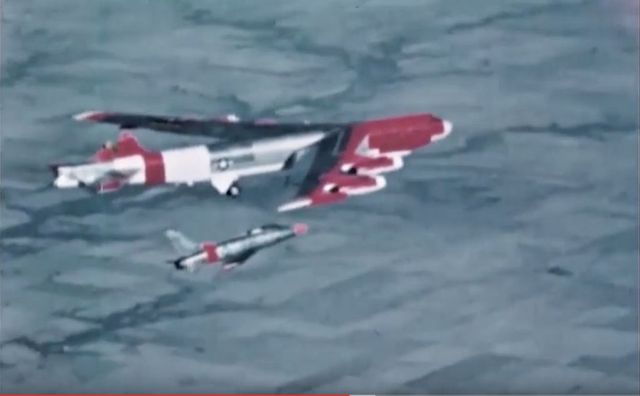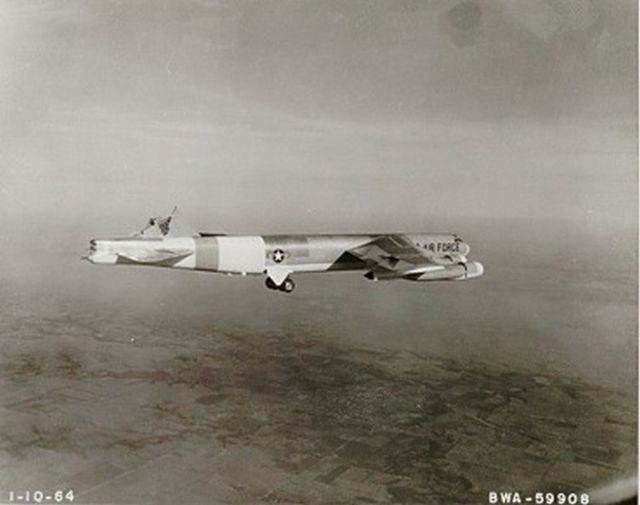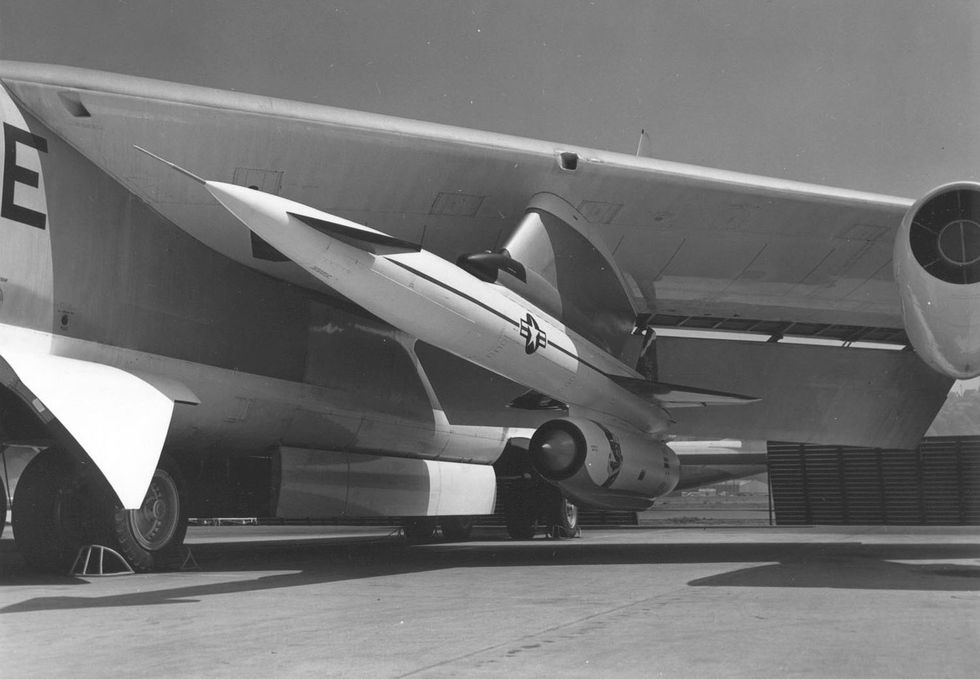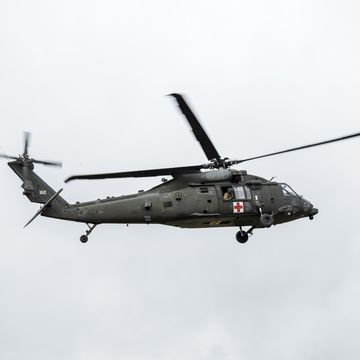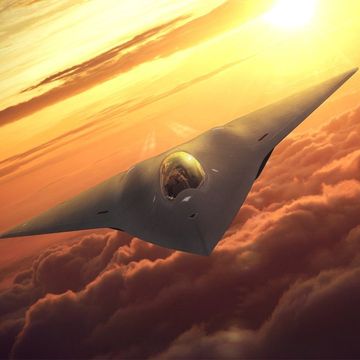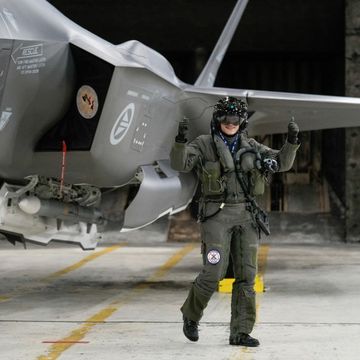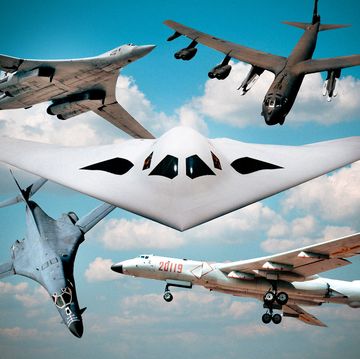In 1964, a B-52H crew was pushing the bomber to its limits when suddenly things went very wrong. The vertical stabilizer—the tail fin—sheared off in flight, forcing the crew to make a wild emergency landing. They succeeded, and the U.S. Air Force later produced this film to explain to aircrews what had happened, what factors led to the successful landing, and what was being done to prevent incidents like it from reoccurring.
It was January 10, 1964 when a B-52H on loan from the U.S. Air Force to Boeing set out with a four-man crew to test the effects of buffeting turbulence on the bomber during low-level flight. As pilot Richard Curry explains in the film, the plane, "had been outfitted with special instruments that recorded stresses exerted on different parts of the aircraft." The plane was to fly for an hour, passing through Wichita, Kansas towards the Rockies. The bomber would fly on autopilot at an altitude of 500 feet and a speed between 280 and 400 knots.
After the plane turned north to run parallel to the Rockies, the instruments recorded "increasing turbulence and heavy gust loads on the tail section." The crew discontinued the flight and climbed to 14,000 feet. It passed near East Spanish Peak, Colorado, an area of "extreme turbulence" with "rapid, explosive-like gusts." The aircraft was pitched to the left, then to the right. A high frequency vibration was felt in the aircraft, and the rudder controls were unresponsive.
The aircrew prepared to bail out, but quickly realized they had "marginal control." They raised air brakes to maintain longitudinal stability and started a fuel transfer to maintain a forward center of gravity.
It's not clear if the crew realized what had happened at the time, but a nearby F-100 Super Sabre that responded to the plane's distress call visually confirmed that 83 percent of the vertical stabilizer had been sheared off by turbulence. The one-ton, barn-door-sized tail fin and rudders were simply gone.
The B-52 immediately set course back for Boeing's headquarters in Wichita, where engineers back at the company recommended the rear landing gear be lowered, as that would help compensate for the loss of the stabilizer. Any drag behind the bomber's center of gravity would help stabilize the plane.
Bad weather at Wichita forced the plane to divert to Blytheville Air Force Base in Arkansas. Nearing Blytheville, the crew gingerly lowered the wing landing gear first, followed by the main landing gear. Since the crew had already lowered the rear landing gear, the plane now had all wheels down and ready for landing. The bomber would land at 160 knots, and the crew computed a landing would take 5,000 feet.
The plane landed with nearly all engines at idle, air brakes on. As it approached the landing strip, the crew noticed the B-52 drifting left and decided to put the plane down before other low-speed adverse effects became apparent. The emergency drag chute was deployed at 130 knots and the plane came to a stop.
In all, the B-52H flew for five hours without a tail fin. Instrument data revealed that the plane had been subjected to "gust loads greater than any previously recorded by a large aircraft." Interestingly, the crew did not jettison (nor does the film mention) the nuclear-tipped AGM-28 Hound Dog cruise missile clearly visible on the right side of the aircraft. Likely this was because the aircraft was performing reasonably well—all things considered—and if it were behind the center of gravity then the drag that Hound Dog created would have helped maintain stability. Since this was a company mission flown by Boeing, it is unlikely the Hound Dog had a thermonuclear warhead aboard.
As a result of the incident, the B-52H airframe was strengthened to deal with future gust load turbulence. The bomber involved in the incident, tail number 61-0023, was repaired and returned to service, where it served for another 44 years on active duty. On July 24, 2008 it was the the first B-52H to go into storage at the "Boneyard" at Davis-Monathan Air Force Base in Arizona.
Follow Popular Mechanics on Reddit.

Kyle Mizokami is a writer on defense and security issues and has been at Popular Mechanics since 2015. If it involves explosions or projectiles, he's generally in favor of it. Kyle’s articles have appeared at The Daily Beast, U.S. Naval Institute News, The Diplomat, Foreign Policy, Combat Aircraft Monthly, VICE News, and others. He lives in San Francisco.
